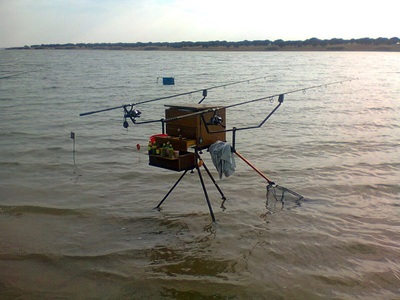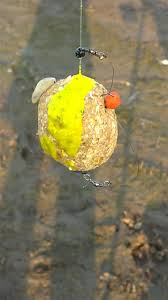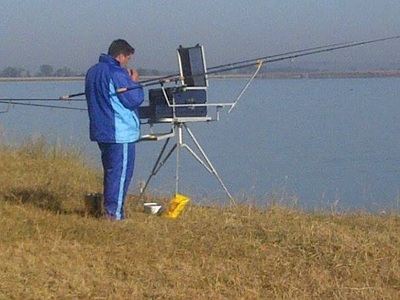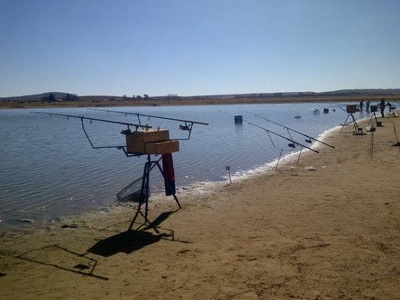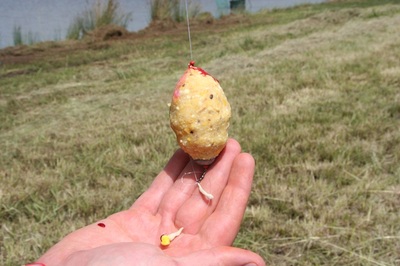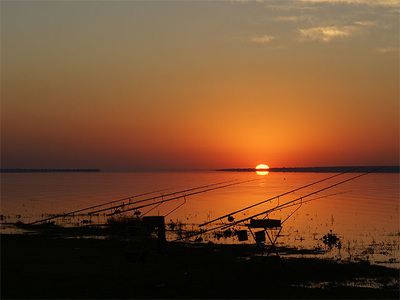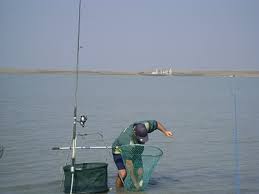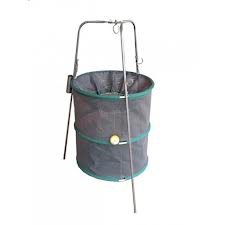BANK angling:
Bank angling is a true all-rounder! Whether you are young or old, beginner or seasoned angler, this style of fishing caters for everyone who is interested in freshwater fishing. One of the main reasons why Bank angling is so appealing is because you do not have to hang on to the rod the whole time like the artificial lure and fly fishing fraternity. You will usually make use of two rods and will have them stationary on rod rests, this makes it possible for you do other things whilst waiting for a bite. These can be things like getting your next rig loaded and ready to go or to play a game with the kids, get the BBQ or campfire going or simply just relax in your chair and enjoy what nature have on offer. It is therefor perfect for people or families who enjoys camping and the outdoors. The whole family can be involved and everyone can fish at his or her own pace. Another reason why Bank Angling is so accessible is because of the costs involved, you do not have to spend a fortune to get started but be warned, this style of fishing offers a huge range of flavours, hookbaits, terminal tackle, rods, reels and other equipment that is unique to Bank angling like the various Tackle boxes, tackle box stands, rod rests and keepnets. The wide variety of equipment and near endless combinations of flavours and tactics makes this style of fishing very appealing for competitive angler. Using your experience and by making small adjustments to your rig, flavour combinations and casting distance can help you catch 50 instead of 5 fish or big fish instead of small. The equipment we use are balanced to give the fish a fighting chance, playing the fish all the way to the net takes more skill and is much more rewarding than just winding the fish in with a big old heavy rod and thick line! Using thinner line, lighter rigs and smaller hooks is an excellent way to increase your catch rate and up your skill level. The equipment used for Bank Angling are uniform and used with purpose to suit the conditions, strategy and target species.
It is great to have nice equipment but even better if you know how to use it!!!
1. Rods
The ideal setup is to have two long (11 - 13ft) graphite rods which will enable you to get the distance that is sometimes required especially at venues where the water may be shallow for quite some distance.
Two shorter rods (7 - 10ft) comes in very handy when fishing shorter distances, they are more manageable, accurate and lighter which is important when fishing at pace. When allowed to use two rods I will usually start with one close and the other further out. This will help you to locate the fish much quicker.
The rod tip must be strong enough to handle the weight of your baited rig. A long butt section is important, especially for accuracy and long distance casting.
2. Reels
There are a number of different reels on the market. I personally still have a soft spot for Centre pin reels (similar to the Alvey reels) and that is purely because they were the ones I used when the fishing bug got hold of me. For me there is nothing that beats the sound of a centre pin's drag screaming when a fish take off with your bait. Okay, before I get carried away, lets move on to what most competitive anglers use today. Spinning reels and Baitrunners (Free spool reel) are the way to go. They are, to be honest, better suited and much easier to use for both young and old. It is also important to match the size of your reel to your rod. If you have 4 rods, say two 10ft and two 12ft, you will still be able to use one size reel for both rod lengths. A good all-rounder size would be "6000"s.
1. Rods
The ideal setup is to have two long (11 - 13ft) graphite rods which will enable you to get the distance that is sometimes required especially at venues where the water may be shallow for quite some distance.
Two shorter rods (7 - 10ft) comes in very handy when fishing shorter distances, they are more manageable, accurate and lighter which is important when fishing at pace. When allowed to use two rods I will usually start with one close and the other further out. This will help you to locate the fish much quicker.
The rod tip must be strong enough to handle the weight of your baited rig. A long butt section is important, especially for accuracy and long distance casting.
2. Reels
There are a number of different reels on the market. I personally still have a soft spot for Centre pin reels (similar to the Alvey reels) and that is purely because they were the ones I used when the fishing bug got hold of me. For me there is nothing that beats the sound of a centre pin's drag screaming when a fish take off with your bait. Okay, before I get carried away, lets move on to what most competitive anglers use today. Spinning reels and Baitrunners (Free spool reel) are the way to go. They are, to be honest, better suited and much easier to use for both young and old. It is also important to match the size of your reel to your rod. If you have 4 rods, say two 10ft and two 12ft, you will still be able to use one size reel for both rod lengths. A good all-rounder size would be "6000"s.
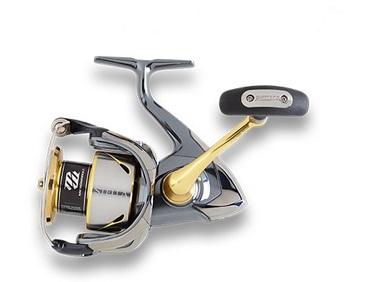
2.1 Spinning reels:
There are many well known makes of reels like Shimano, Daiwa, Mitchell, and others. Your reel does a lot of hard work and it is therefore very important to buy a good quality reel from a brand with a good track record. You do not want your reel to seize up whilst having your PB (personal best fish) on the other end of the line. There are some specs that you can look at, for example, more bearings equal smoother operation. Some reels have more stainless steel components and all-weather seals to avoid rust from occurring. Again buy the best that you can afford. Don't go for quantity, go for quality!
There are many well known makes of reels like Shimano, Daiwa, Mitchell, and others. Your reel does a lot of hard work and it is therefore very important to buy a good quality reel from a brand with a good track record. You do not want your reel to seize up whilst having your PB (personal best fish) on the other end of the line. There are some specs that you can look at, for example, more bearings equal smoother operation. Some reels have more stainless steel components and all-weather seals to avoid rust from occurring. Again buy the best that you can afford. Don't go for quantity, go for quality!
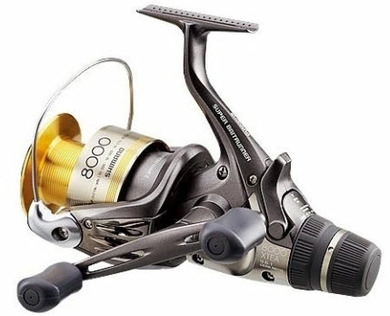
2.2 Baitrunner reels:
The bait runner is basically a fixed spool reel with a normal clutch, however when the bait runner is set to "ON", the spool is free to turn without the clutch or the handle spinning round and round. The advantage of this is, you can set your drag accurately and you do not end up loosening and tightening it all the time. It also allows the fish to pick up the bait and “run” without feeling resistance from the reel and the noise it makes also alert the angler of the bite who then only needs to strike lightly to set the hook properly.
NOTE: It’s probably a little known fact that the Shimano Baitrunner freespool concept was actually an Australian idea.
Bait fishing from a wharf for bream and tailor, former Shimano Australia chairman, John Dunphy, was pondering how to incorporate a freespool mechanism into a threadline reel so a fish could run with the bait before swallowing it, when he hit on an idea that was in his own words, “beyond belief.”
The next day, John and Mark Mikkelsen were on a plane to explain it all to the Japanese design engineers. In an incredibly short period of time, the Baitrunner threadline went from a sketchy theory, to a line-up of dedicated freespool threadline reels. The legend was born.
Snapper fishing devotees right around the country took to Baitrunners in a massive way, but the smaller reels in the lineup also proved handy for fishing baits like scrubworms and mudeyes for brown and rainbow trout, even float fishing for blackfish off estuary retaining walls and rocks, where the ability to feed line to provide a natural drift to the weed bait is essential for success.
The bait runner is basically a fixed spool reel with a normal clutch, however when the bait runner is set to "ON", the spool is free to turn without the clutch or the handle spinning round and round. The advantage of this is, you can set your drag accurately and you do not end up loosening and tightening it all the time. It also allows the fish to pick up the bait and “run” without feeling resistance from the reel and the noise it makes also alert the angler of the bite who then only needs to strike lightly to set the hook properly.
NOTE: It’s probably a little known fact that the Shimano Baitrunner freespool concept was actually an Australian idea.
Bait fishing from a wharf for bream and tailor, former Shimano Australia chairman, John Dunphy, was pondering how to incorporate a freespool mechanism into a threadline reel so a fish could run with the bait before swallowing it, when he hit on an idea that was in his own words, “beyond belief.”
The next day, John and Mark Mikkelsen were on a plane to explain it all to the Japanese design engineers. In an incredibly short period of time, the Baitrunner threadline went from a sketchy theory, to a line-up of dedicated freespool threadline reels. The legend was born.
Snapper fishing devotees right around the country took to Baitrunners in a massive way, but the smaller reels in the lineup also proved handy for fishing baits like scrubworms and mudeyes for brown and rainbow trout, even float fishing for blackfish off estuary retaining walls and rocks, where the ability to feed line to provide a natural drift to the weed bait is essential for success.
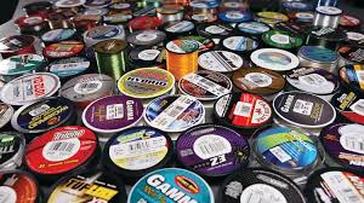
3. Fishing Line
Here the choice is just as vast as with the range of rods, reels and everything else out there! Try and go as thin as possible, it will make a drastic improvement to your casting distance and accuracy. The ideal will be to start of with a Soft (low memory), High Abrasion resistant line of between 6lbs and 10lbs. These lines cost a little bit more but is a very important part of your setup.
Remember that when using thin line it is essential to use a leaderline to absorb the shock created when casting and comes in handy when a harder pull is sometimes needed to net the fish. The ideal breaking strain is around 18lbs and twice the length of your rod. The knot between the mainline and leader must be as small and smooth as possible. The following knots can be used for this task, Albright Special , Alberto Knot or the Yucatan Knot. For a bigger variety of knots you can visit http://www.netknots.com/fishing_knots/
Here the choice is just as vast as with the range of rods, reels and everything else out there! Try and go as thin as possible, it will make a drastic improvement to your casting distance and accuracy. The ideal will be to start of with a Soft (low memory), High Abrasion resistant line of between 6lbs and 10lbs. These lines cost a little bit more but is a very important part of your setup.
Remember that when using thin line it is essential to use a leaderline to absorb the shock created when casting and comes in handy when a harder pull is sometimes needed to net the fish. The ideal breaking strain is around 18lbs and twice the length of your rod. The knot between the mainline and leader must be as small and smooth as possible. The following knots can be used for this task, Albright Special , Alberto Knot or the Yucatan Knot. For a bigger variety of knots you can visit http://www.netknots.com/fishing_knots/
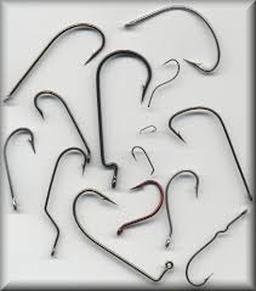
4 Hooks and Weights
4.1 Hooks
Things have come a long way with advances in modern technology especially when it comes to hooks there are also many brands out there on the market.
Buying good quality, Brand Name, hooks pays off. They are generally stronger and sharper and stay that way for longer, especially the chemically sharpened types. Bigger hooks don’t always mean bigger fish the aim is to catch the fish that are there and most times they are not all monsters. Try to stay on the smaller side of the spectrum, Mustad size 10 and smaller is a good place to start. Your hook size is determined by the size of bait you are using and it is always important to keep the point of the hook exposed.
Tip: To test if your hooks are sharp, run the point over your fingernail if it does not slide around it is sharp enough if not it would require replacement.
4.1 Hooks
Things have come a long way with advances in modern technology especially when it comes to hooks there are also many brands out there on the market.
Buying good quality, Brand Name, hooks pays off. They are generally stronger and sharper and stay that way for longer, especially the chemically sharpened types. Bigger hooks don’t always mean bigger fish the aim is to catch the fish that are there and most times they are not all monsters. Try to stay on the smaller side of the spectrum, Mustad size 10 and smaller is a good place to start. Your hook size is determined by the size of bait you are using and it is always important to keep the point of the hook exposed.
Tip: To test if your hooks are sharp, run the point over your fingernail if it does not slide around it is sharp enough if not it would require replacement.
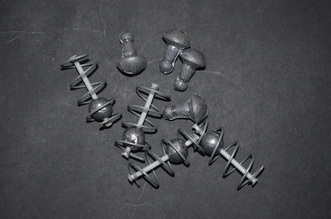
4.2 Weights or Sinkers
Here again we are spoilt for choice, as a general rule always use the lightest sinkers for the conditions at hand as at certain dams the fish are very sensitive to the resistance created by the weights and chances of catching fish decrease significantly as the weight increases.
The two most effective and commonly used sinkers are the Spring and Mushroom sinkers. These sinkers are specially made to serve as a groundbait (berley) carrier and are available in different seizes.
Here again we are spoilt for choice, as a general rule always use the lightest sinkers for the conditions at hand as at certain dams the fish are very sensitive to the resistance created by the weights and chances of catching fish decrease significantly as the weight increases.
The two most effective and commonly used sinkers are the Spring and Mushroom sinkers. These sinkers are specially made to serve as a groundbait (berley) carrier and are available in different seizes.
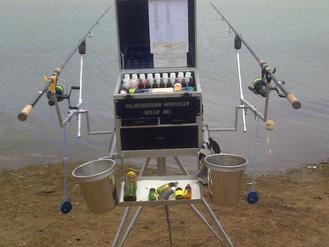
5. Tackle box
I use to call it my Battle station, it almost looks like one and carries all the ammo you need. And that is the idea, all your terminal tackle, flavours, pastes, hookbaits etc should be kept in one place with your rods, groundbait , water bucket and towel off the ground and at a comfortable work height. Having a proper and well stocked tackle box is essential to make your fishing sessions more effective and enjoyable. Be well organized and keep your "Battle station" neat and tidy with everything in it's place, this will allow you to spend more time fishing and less time trying to find things or tying rigs.
Having your tackle box on a stand not only keeps it dry and away from crawling insects but also allow you to fish in the water or on top of tall grass if necessary. The following items are essential and should be in any well prepared angler's tackle box.
I use to call it my Battle station, it almost looks like one and carries all the ammo you need. And that is the idea, all your terminal tackle, flavours, pastes, hookbaits etc should be kept in one place with your rods, groundbait , water bucket and towel off the ground and at a comfortable work height. Having a proper and well stocked tackle box is essential to make your fishing sessions more effective and enjoyable. Be well organized and keep your "Battle station" neat and tidy with everything in it's place, this will allow you to spend more time fishing and less time trying to find things or tying rigs.
Having your tackle box on a stand not only keeps it dry and away from crawling insects but also allow you to fish in the water or on top of tall grass if necessary. The following items are essential and should be in any well prepared angler's tackle box.
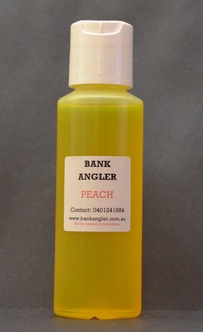
5.1 Dips (Muties): This is not flavours or essences you buy in the Supermarket. The dips we make are made to catch fish and not to bake cake. It is available in various colours and flavours, it also contain additional tested fish attractants that will stimulate fish to feed and come back for more! The application of these dips are almost endless and an art in itself which I will discuss in a separate article. It is a good idea to number the lids and to have a list on the inside of your tackle box for easy reference.
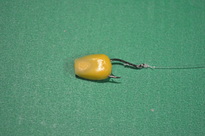
5.2 Pips: Corn is very popular and a must have. Floaties and mini-marshmallows are also very effective and helps to lift your hookbait of the bottom. This is especially handy where you have watergrass or a silty bottom. These items are also available in various colours and flavours.
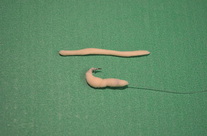
5.3 Pastes: This is an big favorite and is available in various colours and flavours. Anglers usually make their own dough using plain flour and lake water.
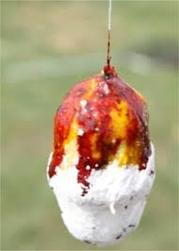
5.4 Powders: Sweeteners, colour powders and S.A Powder for dipping bombs in. It creates a sweet and highly visible green cloud under the water.
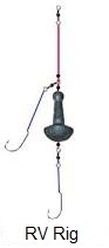
5.5 Rigs: It is always a good idea to have a couple of spare rigs in your tacklebox. The most commonly used are the Paternoster rig and the RV (Rietvlei) rig. The RV rig is very effective and a big favourite amongst anglers. The rig is very effective because of the close proximity of the hooks and groundbait and usually lead to fish catching themselves.
5.6 Spare leaders: The leader line is the link between your thinner spooled line and your rig. The purpose of this line is to handle the extreme tension created when casting. A leader line will typically have a breaking strain of around 18 to 20 pound and is double the length of your rod. It is good to have 10 spare leaders rolled up on an old line spool.
5.7 Spare Reel Spools: Feeding and fishing on exactly the same spot is very important and having pre-measured and clipped in spare spools helps a lot to achieve this. When your line snap all you need to do is to replace it with an premeasured spool and you are ready to go. you will also fish with confidence knowing you hit exactly the same spot every time. I like to have spools with 5lb line for distance casting, 7lb for general use and 10lb for bigger fish or snaggy water.
5.8 Other tackle box items: Terminal tackle like size 10 Snap-swivels, attach to the end of your leader line for quick and easy rig changes. Long nose plier, Side cutter and a nail clipper comes in most handy. A nailbrush to keep all your bottles clean and to remove excess flavourings on the outside of the bottles after you have used them. Policemen or bite indicators are a must! Spare weights, hooks and line for your reels should accompany you to the water but put these in a separate box and leave it in your car in case you need it, your tackle box will be heavy enough as it is!
5.6 Spare leaders: The leader line is the link between your thinner spooled line and your rig. The purpose of this line is to handle the extreme tension created when casting. A leader line will typically have a breaking strain of around 18 to 20 pound and is double the length of your rod. It is good to have 10 spare leaders rolled up on an old line spool.
5.7 Spare Reel Spools: Feeding and fishing on exactly the same spot is very important and having pre-measured and clipped in spare spools helps a lot to achieve this. When your line snap all you need to do is to replace it with an premeasured spool and you are ready to go. you will also fish with confidence knowing you hit exactly the same spot every time. I like to have spools with 5lb line for distance casting, 7lb for general use and 10lb for bigger fish or snaggy water.
5.8 Other tackle box items: Terminal tackle like size 10 Snap-swivels, attach to the end of your leader line for quick and easy rig changes. Long nose plier, Side cutter and a nail clipper comes in most handy. A nailbrush to keep all your bottles clean and to remove excess flavourings on the outside of the bottles after you have used them. Policemen or bite indicators are a must! Spare weights, hooks and line for your reels should accompany you to the water but put these in a separate box and leave it in your car in case you need it, your tackle box will be heavy enough as it is!
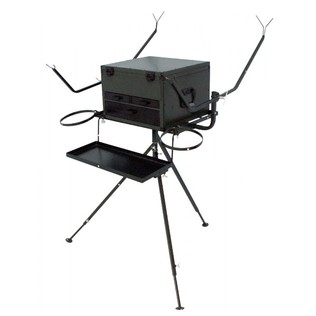
6. Tackle box stand: This is usually made of coated steel and strong enough to take the weight of the contents. Other attachments on the stand are rodrest, a small working platform and bucket rings for water to wash your hands and a second for your groundbait.
